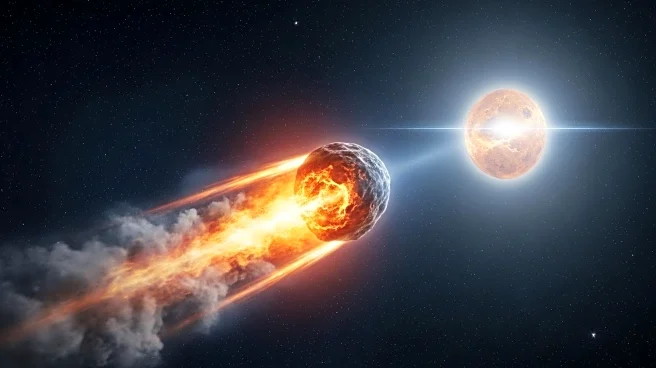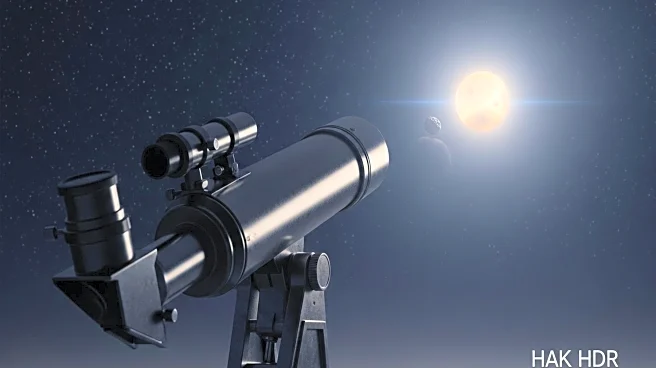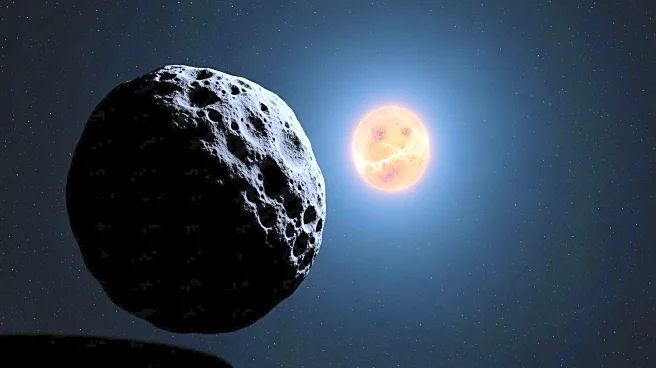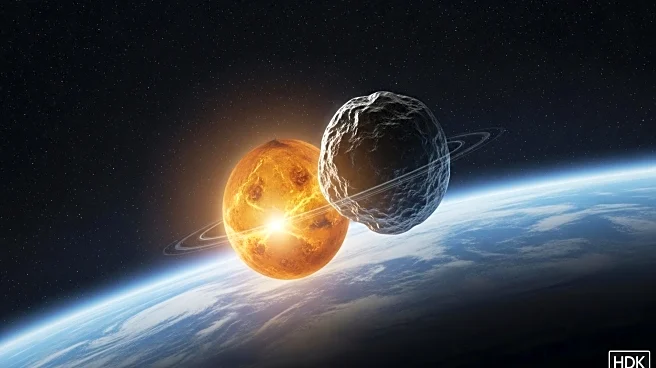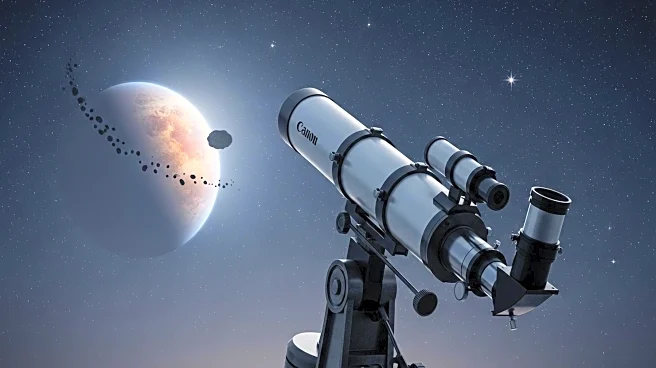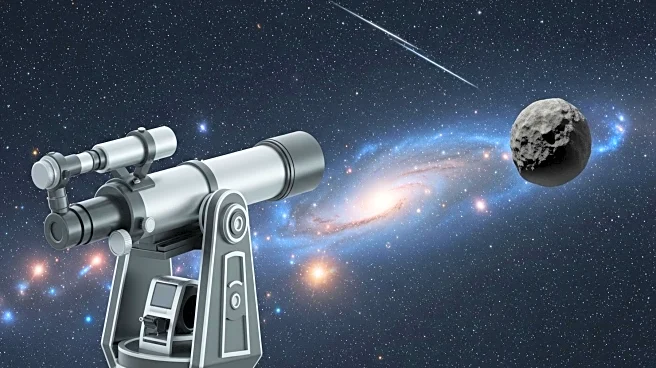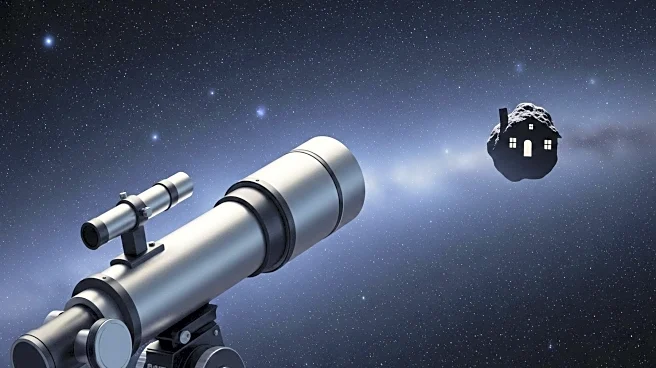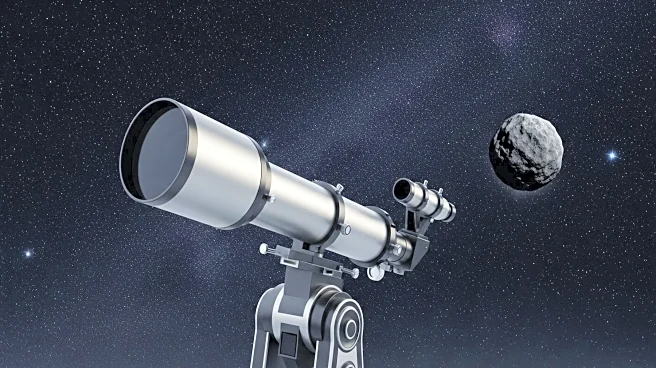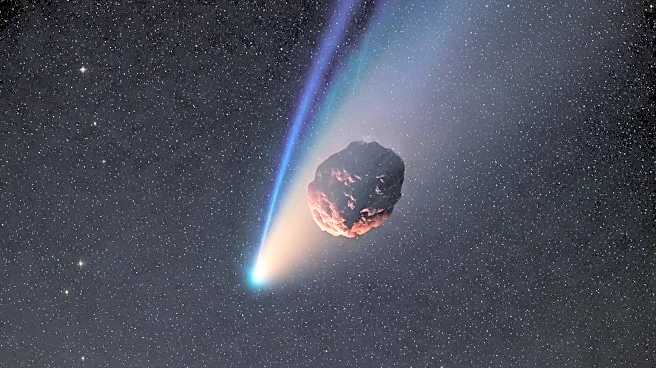What's Happening?
A study conducted by the State University of São Paulo has revealed a population of asteroids orbiting near Venus that could pose a threat to Earth. These asteroids, known as co-orbital asteroids, are difficult to detect due to their proximity to the Sun. The research, led by Professor Valerio Carruba, suggests that gravitational disturbances could redirect one of these asteroids towards Earth every 12,000 years. The study emphasizes the limitations of current space monitoring systems and the need for improved detection capabilities to anticipate these hidden threats.
Why It's Important?
The potential for undetectable asteroids to impact Earth highlights the need for advancements in planetary defense strategies. Current monitoring systems focus on visible threats, but the study suggests that invisible risks must also be addressed. The possibility of a sudden asteroid impact with minimal warning underscores the importance of international collaboration and increased funding for space research. Enhancing detection capabilities could help protect Earth from unforeseen threats and ensure the safety of future generations.
What's Next?
Scientists advocate for the development of new space strategies, including positioning probes closer to the Sun and deploying space telescopes in inner orbits. These measures could expand observational reach and improve the detection of co-orbital asteroids. The study calls for a reassessment of planetary defense priorities and increased awareness of invisible risks. Continued research and technological advancements are essential to address the threat posed by these hidden asteroids.
Beyond the Headlines
The study raises ethical and strategic questions about humanity's preparedness to confront invisible threats. Understanding the behavior of co-orbital asteroids could have broader implications for space exploration and planetary defense. The research underscores the importance of proactive measures to ensure the safety of future generations.

